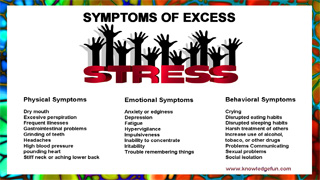Tai Chi
Tai chi (pronounced "tie chi" or "tie chee" and also known by some other names and spellings) is a mind-body practice with a system of exercise and movement that originated in China long ago as a martial or training art is now widely used for health and wellness. A person doing tai chi moves his body slowly and gently with a motions that are patterned after movements in nature, while breathing deeply and meditating. Tai chi is sometimes called "moving meditation" and it can be practiced by almost anyone and in almost any situation.
Many people who practice tai chi do so to improve one or more aspects of their health and to stay healthy. In North America and some other countries, tai chi for health purposes is part of complementary and alternative medicine, or CAM.
A person practicing tai chi moves her body in a slow, relaxed, and graceful series of movements. One can practice on one’s own or in a group. The movements make up what are called forms (or routines). Some movements are named for animals or birds, such as "White Crane Spreads Its Wings." The simplest style of tai chi uses 13 movements; more complex styles can have dozens.
In tai chi, each movement flows into the next. The entire body is always in motion, with the movements performed gently and at uniform speed. It is considered important to keep the body upright, especially the upper body—many tai chi practitioners use the image of a string that goes from the top of the head into the heavens—and to let the body’s weight sink to the soles of the feet.
In addition to movement, two other important elements in tai chi are breathing and meditation. In tai chi practice, it is considered important to concentrate; put aside distracting thoughts; and breathe in a deep, relaxed, and focused manner. Practitioners believe that this breathing and meditation have many benefits, such as:
- Massaging the internal organs
- Aiding the exchange of gases in the lungs
- Helping the digestive system work better
- Increasing calmness and awareness
- Improving balance.
Browse Related Info:
- Mind and Body Interventions or Practices
- Traditional Chinese Medicine
- Qi Gong
- Yoga
- Hypnosis
- Meditation
- Relaxation Techniques
- CAM Natural Products
- Herbal Remedies
- Wellness and Well-Being
- Health Pages
- Testing Treatments

Did You Know?
Among the different names and spellings of tai chi are taiji and t’ai chi. Many consider the term "tai chi" to be a shortened form of "tai chi chuan" (two other spellings are t’ai chi ch’uan and taijiquan).
Tai chi developed in China in about the 12th century A.D. It started as a martial art, or a practice for fighting or self-defense, usually without weapons. Over time, people began to use tai chi for health purposes as well.
Many different styles of tai chi, and variations of each style, developed. The term "tai chi" has been translated in various ways, such as "internal martial art," "supreme ultimate boxing," "boundless fist," and "balance of the opposing forces of nature."
Yoga and two practices of Chinese origin -- tai chi and qi gong -- are sometimes called “meditative movement” practices. All three practices include both meditative elements and physical ones.
Generally, mind-body medicine focuses on:
• The interactions among the brain, the rest of the body, the mind, and behavior.
• The ways in which emotional, mental, social, spiritual, and behavioral factors can directly affect health.
Tai chi and qi gong are centuries-old, related mind and body practices.
Tips on How to Select Health Care Practitioner
Selecting a health care practitioner of conventional medicine or complementary and alternative medicine (CAM) is an important decision and can be key to ensuring that you are receiving the best health care.
If you are seeking a complementary and alternative medicine (CAM) practitioner, speak with your primary health care provider(s) regarding the therapy in which you are interested. Ask if they have a recommendation for the type of CAM practitioner you are seeking.
Make a list of health care practitioners and gather information about each before making your first visit. Ask basic questions about their credentials and practice. Where did they receive their training? What licenses or certifications do they have? How much will the treatment cost?
Check with your insurer to see if the cost of therapy will be covered.
After you select a practitioner, make a list of questions to ask at your first visit. You may want to bring a friend or family member who can help you ask questions and note answers.
Come to the first visit prepared to answer questions about your health history, including injuries, surgeries, and major illnesses, as well as prescription medicines, vitamins, and other supplements you may take.
Assess your first visit and decide if the practitioner is right for you. Did you feel comfortable with the practitioner? Could the practitioner answer your questions? Did he respond to you in a way that satisfied you? Does the treatment plan seem reasonable and acceptable to you?





